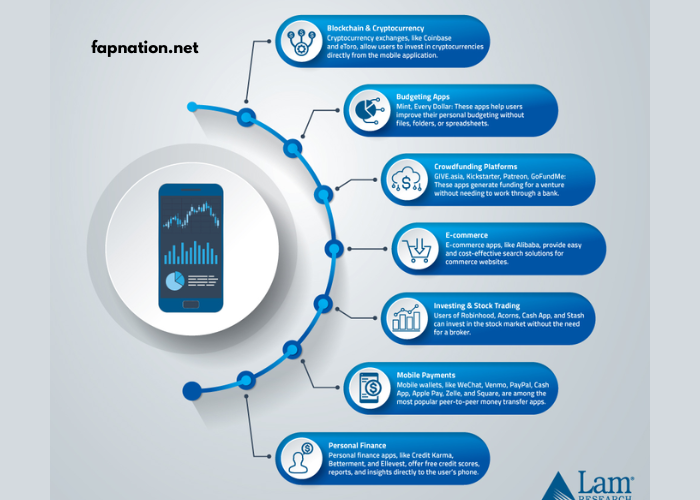Starting and growing a business in today’s highly competitive market can feel daunting. With so many players vying for the same customers, carving out a space for your business requires strategic thinking, resilience, and adaptability. Building a thriving business isn’t just about having a great product or service—it’s about positioning yourself in a way that attracts customers, fosters growth, and sustains success. In this article, we’ll explore practical steps, strategies, and tips that will help you build a thriving business even in the most challenging and competitive markets.
Understanding the Competitive Landscape
Before diving into the mechanics of building a thriving business, it’s important to first understand what a competitive market entails. A competitive market is one where numerous businesses offer similar products or services, and consumers have many choices. The main challenge here is differentiation—what sets your business apart from others?
In this section, we will discuss how to assess your market and identify your unique position.
Conducting Market Research
Market research is a critical first step in building a successful business. It helps you understand industry trends, consumer behavior, and the strategies employed by your competitors. There are several tools and methodologies you can use for conducting market research:
- Surveys and Interviews: Gather feedback from your target audience to learn about their needs, pain points, and expectations. This helps you refine your product or service offering.
- Competitive Analysis: Evaluate what your competitors are doing. Identify their strengths and weaknesses, and look for gaps or opportunities you can leverage to your advantage.
- Industry Reports and Data: Use existing research and data to get an overview of market trends, customer preferences, and emerging technologies.
By conducting thorough market research, you gain a clear understanding of the competitive environment and can position your business accordingly.
Identifying Your Unique Selling Proposition (USP)
Your Unique Selling Proposition (USP) is the factor that differentiates your business from others in the market. It could be a product feature, customer service, price point, or a particular value your company offers. Establishing a strong USP is essential to standing out in a crowded marketplace. Here are some ways to identify your USP:
- Solve a Specific Problem: Focus on solving a unique or underserved problem that your competitors aren’t addressing.
- Emphasize Quality or Innovation: If your product or service offers superior quality or innovative features, make that a key selling point.
- Offer Exceptional Customer Service: In industries where products or services are similar, providing outstanding customer service can set you apart.
Your USP is the foundation for all of your marketing and brand messaging. Make sure it resonates with your target audience and clearly communicates the value you bring.
Building a Strong Brand
A strong brand is essential to thriving in a competitive market. It’s more than just a logo or a catchy tagline; it’s about how your business is perceived by customers. A solid brand will not only attract customers but also inspire loyalty, which is critical in a market where consumer options are plentiful.
Define Your Brand Identity
Your brand identity is the personality and values that your business projects. It’s about creating a narrative that customers can connect with. Start by defining the following elements:
- Mission and Vision: What does your company stand for? What problem are you solving? What do you hope to achieve in the long run?
- Core Values: What principles guide your business decisions? Do you prioritize sustainability, innovation, or community engagement?
- Brand Voice: Is your brand tone formal or casual? Humorous or serious? The way you communicate with customers shapes how they perceive your business.
Having a clearly defined brand identity helps build trust and recognition, which are key factors in differentiating your business in a competitive environment.
Consistency Across Channels
Consistency is key when building a brand. Your message should remain consistent across all touchpoints, whether it’s your website, social media, or customer service interactions. Ensure that the visuals, language, and overall messaging align with your brand identity to create a cohesive and professional image.
Effective Marketing Strategies for Growth
Once you’ve established a solid foundation and a strong brand, it’s time to implement effective marketing strategies that will drive growth and help you reach a wider audience. In a competitive market, staying ahead of the curve is crucial to maintaining momentum.
Digital Marketing and SEO
In today’s digital age, having a strong online presence is essential. Digital marketing techniques like Search Engine Optimization (SEO), content marketing, and social media engagement are powerful tools for reaching potential customers and driving traffic to your website.
Search Engine Optimization (SEO)
SEO is the process of optimizing your website to rank higher in search engine results. With so many businesses vying for attention, appearing on the first page of Google is crucial. Here are some key SEO strategies to implement:
- Keyword Research: Identify the keywords your target audience is searching for and integrate them into your website’s content.
- Quality Content: Create valuable, informative, and engaging content that answers your audience’s questions and addresses their needs.
- On-Page SEO: Optimize your website’s structure, titles, meta descriptions, and images to improve search engine visibility.
- Backlinking: Earn high-quality backlinks from reputable websites to enhance your site’s authority.
By investing in SEO, you can increase your visibility and attract organic traffic to your website, which can translate into more leads and sales.
Social Media Marketing
Social media platforms such as Facebook, Instagram, LinkedIn, and Twitter offer excellent opportunities to engage with your audience directly. Create a consistent social media presence by:
- Sharing valuable content that resonates with your audience.
- Engaging with followers through comments, direct messages, and community-building initiatives.
- Running targeted ad campaigns to increase brand awareness and drive traffic to your website.
Social media allows you to build relationships with your customers, which can be a powerful way to increase brand loyalty and stay top of mind in a competitive market.
Leverage Email Marketing
Email marketing remains one of the most effective ways to nurture leads and convert them into loyal customers. To build a successful email marketing strategy:
- Build a Targeted Email List: Segment your list based on customer behavior, preferences, and demographics to ensure your emails are relevant.
- Offer Valuable Content: Provide exclusive offers, discounts, and educational content to keep subscribers engaged.
- Personalize Your Communication: Personalize your email subject lines and content to create a more individualized experience for each subscriber.
Email marketing allows you to stay connected with your audience and nurture leads over time, which is especially important in a competitive market where trust and relationships are key.
Delivering Outstanding Customer Experience
Customer experience (CX) plays a pivotal role in differentiating your business from competitors. In today’s world, customers expect more than just a quality product—they want an exceptional experience at every touchpoint.
Provide Excellent Customer Service
Exceptional customer service is a powerful differentiator in a competitive market. Ensure that your customer service team is responsive, empathetic, and knowledgeable. Here are some tips for delivering outstanding service:
- Timely Responses: Respond to customer inquiries and issues promptly, whether through email, phone, or social media.
- Personalized Interactions: Address customers by name and provide tailored solutions to their problems.
- Exceed Expectations: Go above and beyond to surprise and delight your customers, whether through a small gift, personalized thank-you note, or proactive problem-solving.
Satisfied customers are more likely to return and recommend your business to others, helping you build a loyal customer base in a competitive market.
Implement a Customer Feedback Loop
Creating a system for gathering customer feedback is essential for continuous improvement. Use surveys, reviews, and follow-up emails to collect valuable insights on your customers’ experiences. Act on this feedback to improve your products, services, and customer interactions. This shows that you value your customers and are committed to providing them with the best possible experience.
Building Strong Partnerships and Networking
In a competitive market, collaboration can be just as valuable as competition. Building strong relationships with other businesses, influencers, and industry leaders can help you grow your brand and expand your reach.
Partner with Complementary Businesses
Look for businesses that offer complementary products or services to your own. By partnering with them, you can cross-promote your offerings, share customer bases, and tap into new markets. For example, a fitness equipment company could partner with a gym to offer exclusive discounts to gym members.
Attend Industry Events and Conferences
Networking with other business owners and industry professionals is a great way to learn, grow, and build partnerships. Attend industry events, conferences, and trade shows to stay up-to-date on trends and establish valuable connections. Collaborating with influencers or thought leaders can also help raise your brand’s visibility and credibility.
Scaling Your Business for Long-Term Success
Building a thriving business is not just about surviving the competition—it’s about positioning your business for long-term growth and success. As your business grows, you’ll need to adapt and scale to meet increasing demand and expanding markets.
Focus on Operational Efficiency
To scale effectively, you need to streamline your operations and eliminate inefficiencies. Invest in technology, automation, and process optimization to improve productivity and reduce costs. The more efficient your operations, the easier it will be to handle growth without compromising quality.
Invest in Talent and Leadership
As your business grows, you’ll need to hire and develop talented individuals who can help drive the business forward. Build a strong leadership team, provide ongoing training, and empower employees to take ownership of their roles.
Conclusion
Building a thriving business in a competitive market is no easy feat, but with the right strategies, dedication, and adaptability, it’s certainly achievable. From understanding the competitive landscape to delivering exceptional customer experiences, each step plays a crucial role in ensuring your business stands out and thrives in today’s dynamic market. By staying focused on your unique selling proposition, investing in your brand, and constantly optimizing your operations, you can carve out a strong and sustainable position in even the most crowded industries.



